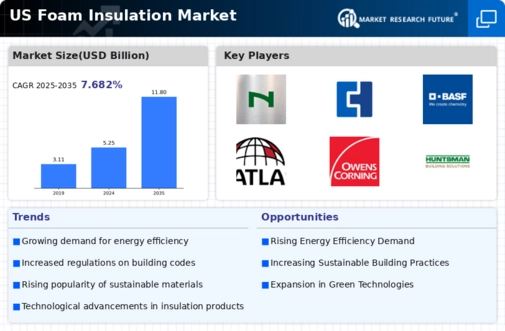The US Foam Insulation Market is characterized by a blend of innovation and competition, driven by a growing demand for energy efficiency and sustainability in construction and manufacturing sectors. As the market evolves, various suppliers and manufacturers strive to enhance their product offerings, focusing on factors such as insulation performance, environmental impact, and cost-effectiveness.
The dynamics of the market are influenced by the presence of both established players and emerging companies that are increasingly investing in research and development to introduce advanced foam insulation solutions. With a variety of applications across residential, commercial, and industrial sectors, the competitive landscape is marked by strategic partnerships, mergers, and acquisitions aimed at expanding market reach and improving service delivery.
Nucor holds a significant position within the US Foam Insulation Market, leveraging its robust manufacturing capabilities and extensive network to meet the evolving needs of end-users. The company benefits from a reputation for quality and innovation, which allows it to capture a diverse customer base seeking reliable foam insulation solutions.
Nucor's strengths include its commitment to sustainable practices, as it emphasizes environmentally friendly products that resonate well with the current market trends. The company's adaptability in adjusting to varying industry demands further reinforces its competitive edge, as it continually seeks to optimize production processes and incorporate the latest technologies in foam insulation.
Nucor's strong focus on customer service and support also enhances its market presence, making it a trusted choice among contractors and developers in the US. CertainTeed, another key player in the US Foam Insulation Market, offers a comprehensive range of products that cater to different insulation needs.
The company is known for its innovative foam board insulation and spray foam products, which are designed to deliver superior thermal performance and reduce energy costs for residential and commercial applications. With a strong market presence, CertainTeed has built a reputation for quality and reliability, reinforced by its commitment to sustainability and energy-efficient solutions.
The company's strategic investments in research and development have enabled it to stay at the forefront of insulation technology, frequently introducing new and improved products. CertainTeed has also pursued several mergers and acquisitions to enhance its operational capabilities and market reach.
This strategy not only broadens its product offering but also enables the company to cater to regional demands more effectively, making it a formidable competitor in the industry.






















